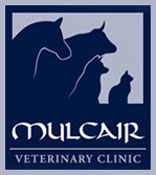Rabbits can make very good pets, they do not take up a lot of space and can become friendly with humans. They will though need to be given some attention every day and they require regular handling to keep them tame. You will need a safe environment for your rabbit so they can come out of their hutch for exercise, grooming and feeding.
Rabbits are herbivores and spend a lot of time eating. It is best to give them a diet of grass along with vegetable matter, a selection of foliage, leaves and roots. It is best to place the hutch over an area of grass.
You will need to move your hutch to stop the ground becoming bare and muddy in the wet. If you do not have access to grass hay can be fed. Hutches should be large in size, providing plenty of room for the rabbit to move around and stretch out. It is best to have two areas, a raised section for sleeping (lined with hay and enclosed) and the other area should be open with space for your rabbit to move around, stretch out and play.
They will also need something to chew on to keep their teeth in good order. Try to make the area exciting with tubes and tree stumps so that it can play. Beware that rabbits burrow so the hutch should either have a wire base or the fence should go into the ground. You should check regularly for signs of burrowing. A rabbit likes to lead a stress free life. This will also ensure that it stays healthy.
The hutch should be kept clean with plenty of hay and food. This should not be allowed to get stale and accumulate. Room for exercise will also keep your rabbit happy. Please Contact Us if you have any queries about Rabbits.
What are the signs that my rabbit may be ill?
- Loss of appetite
- Weight loss
- Looking depressed
- Skin trouble
- Runny faeces and urine soaking into the back legs
A loss of appetite or your rabbit not eating may indicate a blockage in their guts, this should be looked at by your vet immediately. This can be due to furballs and other obstructions. For this reason your rabbit should be frequently groomed, also their teeth and claws should be checked often.
What does a rabbit need?
- To be with other rabbits or guinea pigs
- A good supply of grass is invaluable along with a mixed diet of oats, wheat, rabbit pellets, apples and carrots, together with some good quality hay
- A mineral lick
- A supply of fresh water in a drinking bottle available at all times
- A large hutch that is kept clean– cleanliness is very important
- Rabbits burrow, so make sure the enclosure is escape proof
Rabbits make good companions and smaller rabbits are easily handled by children. They are easier to handle than guinea pigs and live longer. However, large rabbits need large hutches which are expensive to buy. Rabbits need plenty of space for exercise. Also hutches need regular cleaning and this is a big commitment.
Factsheet
Lifespan:
6 – 8 years
Sexual Maturity:
90 days (small breeds) 120 days (large breeds)
Breeding:
Remember that does (female rabbits) can become pregnant several times each year. To prevent pregnancy your doe should never live with a buck (male rabbit) unless he is castrated.
In season: (When female rabbit is fertile and can be made pregnant)
Any time – in response to male
Gestation:
Approximately 31 days
Handling:
Lift the rabbit using both hands. Take the weight of the rabbit on one arm and steady it by gently holding the scruff of the neck (loose skin behind the neck) or the base of the ears. Once in the arms, the rabbit can be held against the body with its head over one shoulder. Never lift a rabbit by its ears or by the scruff of its neck. Put the rabbit down hind legs first to avoid being kicked or scratched.
Companionship:
Rabbits naturally live in groups called colonies and so they need lots of companionship. It is kinder to keep more than one rabbit, or to introduce it to another animal such as a guinea pig, when they are both young. If the rabbit has to live alone, you must make sure that you spend lots of time with it.
What diseases can a rabbit get?
Coccidiosis:
Symptoms include a yellow look, diarrhoea, dullness and loss of appetite. This is highly infectious and the rabbit should be kept away from any others.
Constipation & Diarrhoea:
This is caused by dietary problems such as not enough roughage. If this carries on for more than 24 hours, seek veterinary advice.
Flystrike:
This is a summer problem especially for the long haired rabbits. The “strike fly” lays its eggs in faeces soiled fur. Within 12 – 14 hours the maggots hatch and eat into the rabbit, eventually killing it. It is essential to stop this by daily cleaning of the hutch, replacing the bedding, and checking the rabbit is clean under its tail.
Obesity:
Caused by too much food and not enough exercise.
Overgrown Teeth and Claws:
Teeth can become overgrown if there is a lack of gnawing material in the hutch. Lack of exercise causes claws to become overgrown and regular clipping may be necessary.
Parasites:
Fleas, lice, mites and ticks can cause skin irritation, sores and even debilatation.
Snuffles:
This is similar to a cold. This is easily passed on to other rabbits and can lead to pneumonia. Keep the rabbit away from any others and seek veterinary advice straight away.

